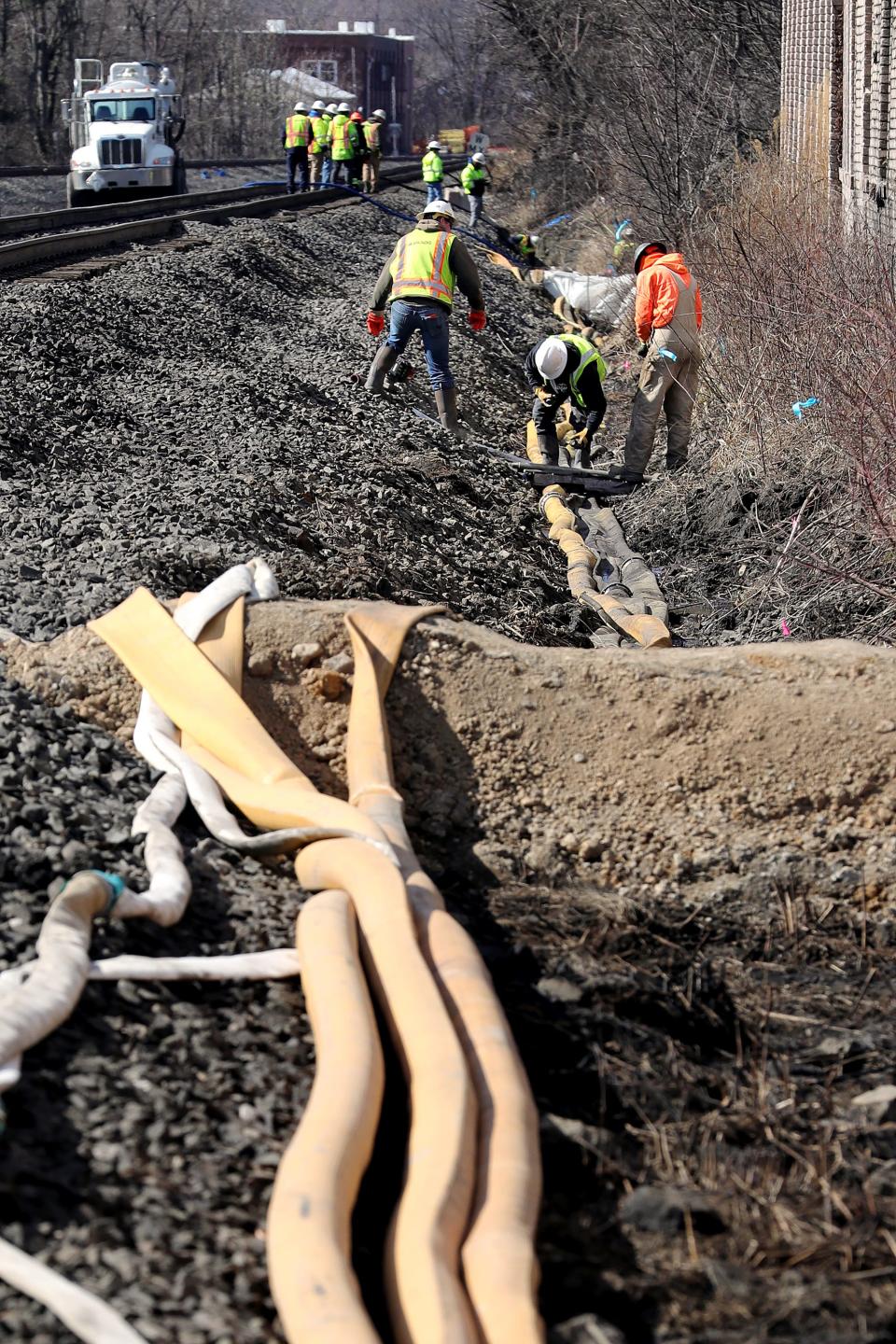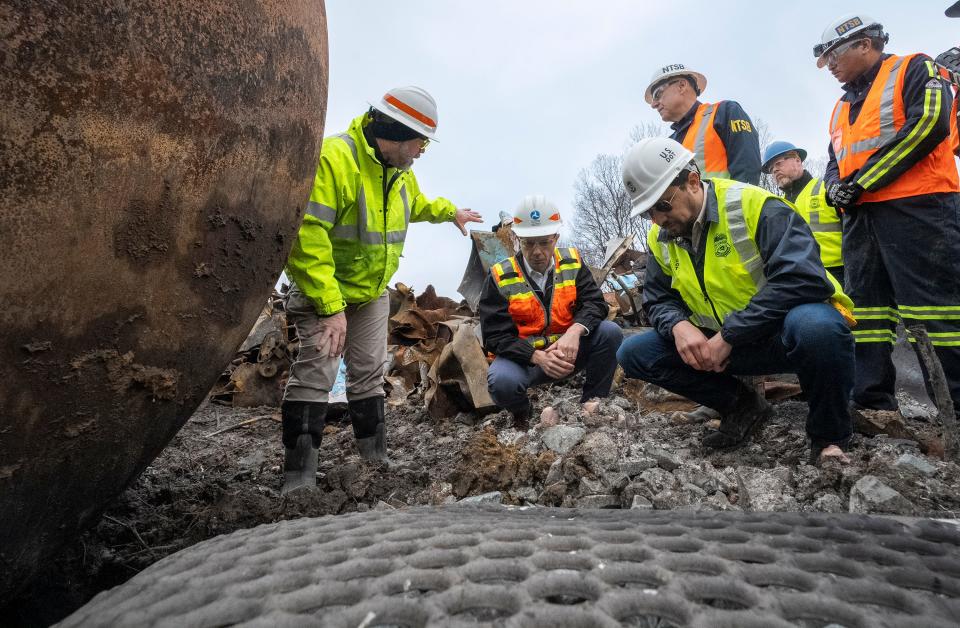Ohio train derailment happened moments after crew warned of axle overheating, NTSB says
The crew of a Norfolk Southern train that derailed in East Palestine, Ohio, became aware of an overheated axle just moments before the wreck and tried to stop the train, the National Transportation Safety Board said Thursday.
The board released initial findings from its investigation three weeks after a freight train carrying hazardous materials derailed and spilled chemicals into the air, water, and soil. Five of the derailed cars contained vinyl chloride, which Norfolk Southern officials discharged through a controlled release to prevent an explosion.
Residents and local leaders are worried about the longtime health consequences of the train crash, fire, and spill. But experts and national authorities largely minimized the health concerns, essentially saying the derailment and toxic spill on Feb. 3 isn't a full-scale environmental disaster such as Love Canal or the Deepwater Horizon oil spill.
“I can tell you this much: This was 100% preventable," NTSB chair Jennifer Homendy said during a news conference Thursday.

EXPLAINED: Just how dangerous is the Ohio derailment disaster? Why it's confusing.
NEWS: EPA steps up cleanup oversight in Norfolk Southern train derailment site in Ohio
What the NTSB preliminary report says
As the train traveled through East Palestine on Feb. 3, a hot bearing detector along the railroad issued an alarm instructing the crew to slow down and stop to inspect a hot axle, according to the NTSB report. The train was traveling about 47 mph at the time of the derailment, below the maximum speed of 50 mph.
The report says:
An axle had been heating up as the train went down the tracks.
The train passed two other hot-bearing detectors starting 30 miles before East Palestine. The wheel bearing heated up over that time, but Norfolk Southern didn't consider the first two recorded temperatures to be critical.
Crew members tried to slow the train down and automatic brakes kicked in.

Investigators obtained local surveillance footage that showed the bearing on the brink of failure before the derailment.
Norfolk Southern said the NTSB report showed the heat detectors worked as intended and the train crew operated “within the company's rules." Still, the company said it would “need to learn as much as we can from this event” and “develop practices and invest in technologies that could help prevent an incident like this in the future.”
What do experts say?
Outside experts said the report appeared to show the system worked as designed, including the spacing of the hot bearing detectors along the tracks and the operation of the sensors.
“There’s nothing in the NTSB report that surprises me at all,” Dave Clarke, the former director of the Center for Transportation Research at the University of Tennessee, told The Associated Press. “I can’t see anything to really criticize about what happened or how the response was made.”
What's next?
From here, the NTSB will focus on the wheel bearing, rail car design, and whether the venting and burning of vinyl chloride was carried out properly. Investigators will also look into Norfolk Southern's inspection practices and their use of defect detectors, including the threshold for what's considered a critical temperature.
A spokesman for Ohio Gov. Mike DeWine said he's reviewing the initial findings but still awaits the NTSB's final report and safety recommendations.
Read the full report here:
NTSB East Palestine prelimi... by CincinnatiEnquirer
Haley BeMiller is a reporter for the USA TODAY Network Ohio Bureau, which serves the Columbus Dispatch, Cincinnati Enquirer, Akron Beacon Journal and 18 other affiliated news organizations across Ohio.
Contributing: Trevor Hughes and Elizabeth Weise, USA TODAY; The Associated Press
This article originally appeared on USA TODAY NETWORK: NTSB says Ohio train derailment happened after axle heat warning

